TL;DR: The best Yeti alternative is the RTIC Ultra-Light Cooler because it has comparable insulation, is lighter weight, and is made of just as durable materials—all at a lower price than Yeti coolers.
I think it’s safe to say that the best part of camping is eating. Or, perhaps it’s enjoying a cold beer or seltzer next to the campfire.
In either case, a good cooler is essential for keeping your groceries refrigerated and your beverages ice cold in the great outdoors.
Cool air will escape and your ice will quickly melt if your cooler isn’t up to snuff. We all know how unpleasant it is to dig through a cooler filled with melted ice and soggy lettuce.
If you’re reading this article, you’re likely already aware that one of the leading brands for coolers is Yeti.
Yeti coolers are heavy-duty and top-quality, but they’re also expensive. And no product or brand is 100% perfect for every person’s needs.
So, while you might admire what Yeti has to offer, perhaps you’re looking for a Yeti cooler alternative.
And if that’s the case, you’re probably looking for more than just a fake Yeti cooler, but a quality ice chest in its own right.
In this article, I’ve found the best Yeti alternative cooler brands. Some are cheaper Yeti alternatives, while others offer alternative features and designs.
But they all have one thing in common: they’re sure to keep your drinks and groceries chilled for days on your next camping trip!

Here’s a Quick Look at Our Recommendations
| Product | Description | |
 | BISON Medium Rotomolded Cooler | Check on Amazon |
 | Siberian Coolers Alpha Pro Series | Check on Amazon |
 | Canyon Cooler | Check on Amazon |
 | Igloo ECOCOOL Cooler | Check on Amazon |
 | Coleman Xtreme 5 Cooler | Check on Amazon |
 | RTIC Ultra-Light | Check on Amazon |
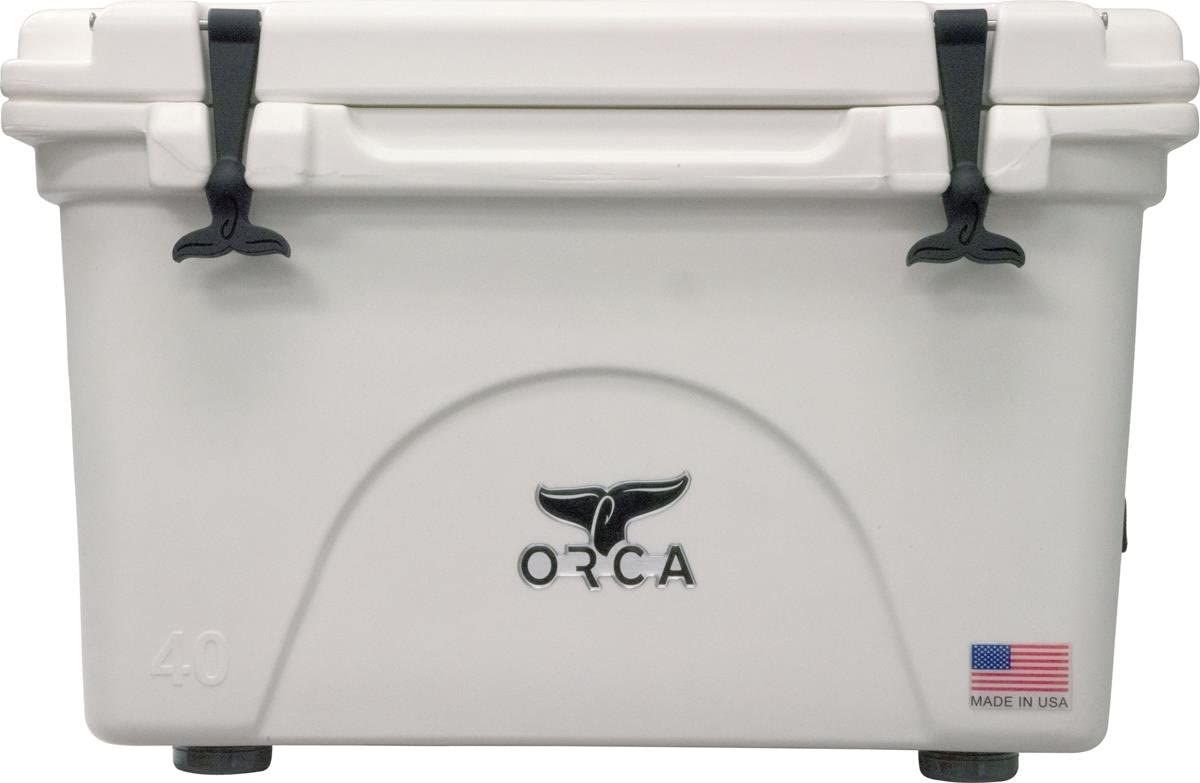 | Orca Cooler | Check on Amazon |
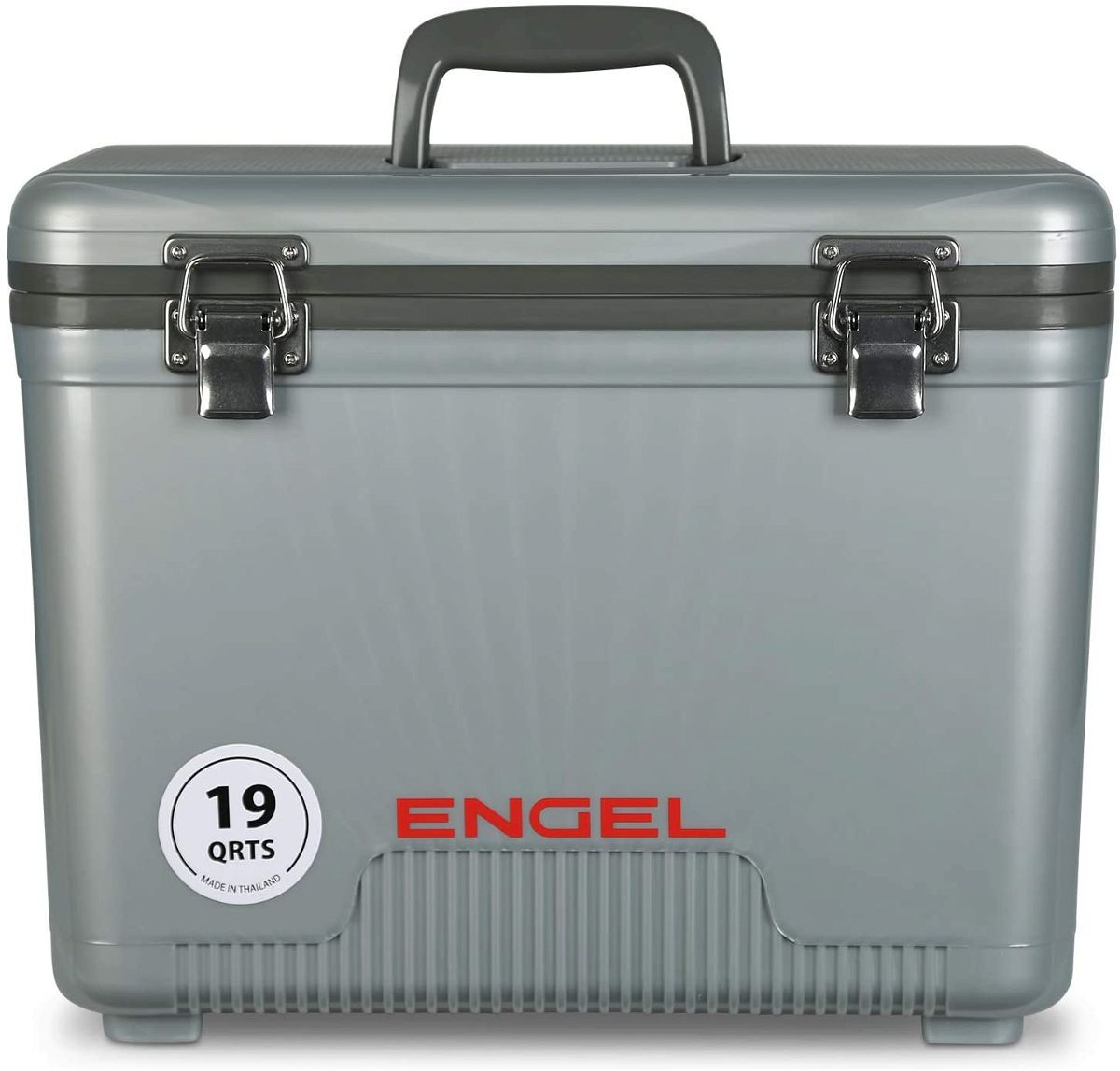 | ENGEL Cooler/Dry Box | Check on Amazon |
 | IceMule Pro Cooler – 23 Liters | Check on REI |
 | Grizzly 20 Cooler | Check on Amazon |
 | Pelican Elite Coolers with Wheels | Check on Amazon |
 | Lifetime 65 Quart High-Performance Hard Cooler | Check on Amazon |
Main Pros and Cons of Yeti Coolers
Yeti has been in operation since 2006. Their original classic product is a hard-sided ice chest, although today, they’ve branched out into a whole range of hard and soft-sided coolers and many other outdoor products.
Yeti is a USA-based company. While they manufacture some of their products in China and the Philippines, the Yeti Tundra comes from USA-based production facilities in Iowa and Wisconsin.
As I mentioned above, Yeti makes both hard coolers and soft coolers. Their soft coolers have dense fabric shells, ergonomic backpack straps, and secure magnetic closures. They’re lightweight, and they come in a range of sizes.
For this article, however, l’m focusing on the most classic Yeti hard-sided ice chest available.
While Yeti retired their original Sherpa model in 2008, they replaced it with its current equivalent, the Yeti Tundra.
The Tundra is a durable, extensively-insulated cooler that’s available in a wide range of sizes.
Before going into the top Yeti cooler alternatives, let’s look at the strengths and weaknesses of this flagship Yeti cooler so you know which features to compare.
Pros

Advanced insulation
The Tundra has super thick walls that hold three inches of foam insulation and an advanced, multipart locking system to seal in the cool air.
It also has heavy-duty rubber latches, interlocking hinges, and a form-fitting lid gasket to seal against warm air.
Bear-Proof with Lock
After a childhood spent camping in Northern California, I’m always ultra careful about leaving food accessible to bears when I camp.
If a bear raids your camp, you risk more than just losing your camping groceries – you also risk a curious bear getting up-close-and-personal to you, too!
While Yeti coolers aren’t guaranteed to be bear-resistant on their own, Yeti sells a lock that’s compatible with the Tundra cooler. When it’s in place, no bear will be able to get inside.
A Tundra cooler with a bear-proof lock meets the Interagency Grizzly Bear Committee (IGBC) standards for bear-resistant containers. It has passed multiple simulations to gain that certification.
Rotomolded
Yeti coolers have a rotomolded construction, or “rotationally molded plastic.” That means that the liquid plastic is cast in a mold and rotated while it cools, creating a single piece with no seams.
Rotomolded coolers are ultra-strong, and they also offer superior ice retention. No seams mean no microscopic cracks for cold to escape.
Vortex drain system
Coolers usually have a spout on the side from which you can drain the melted ice, and some drainage systems work better than others.
The Yeti Tundra’s vortex drain is leak-proof and has a unique design to optimize the flow.
Customizable
Yeti will print the logo of your favorite collegiate sports team, Nascar driver, or major league baseball team on any cooler. They also offer custom corporate logos.
Cons
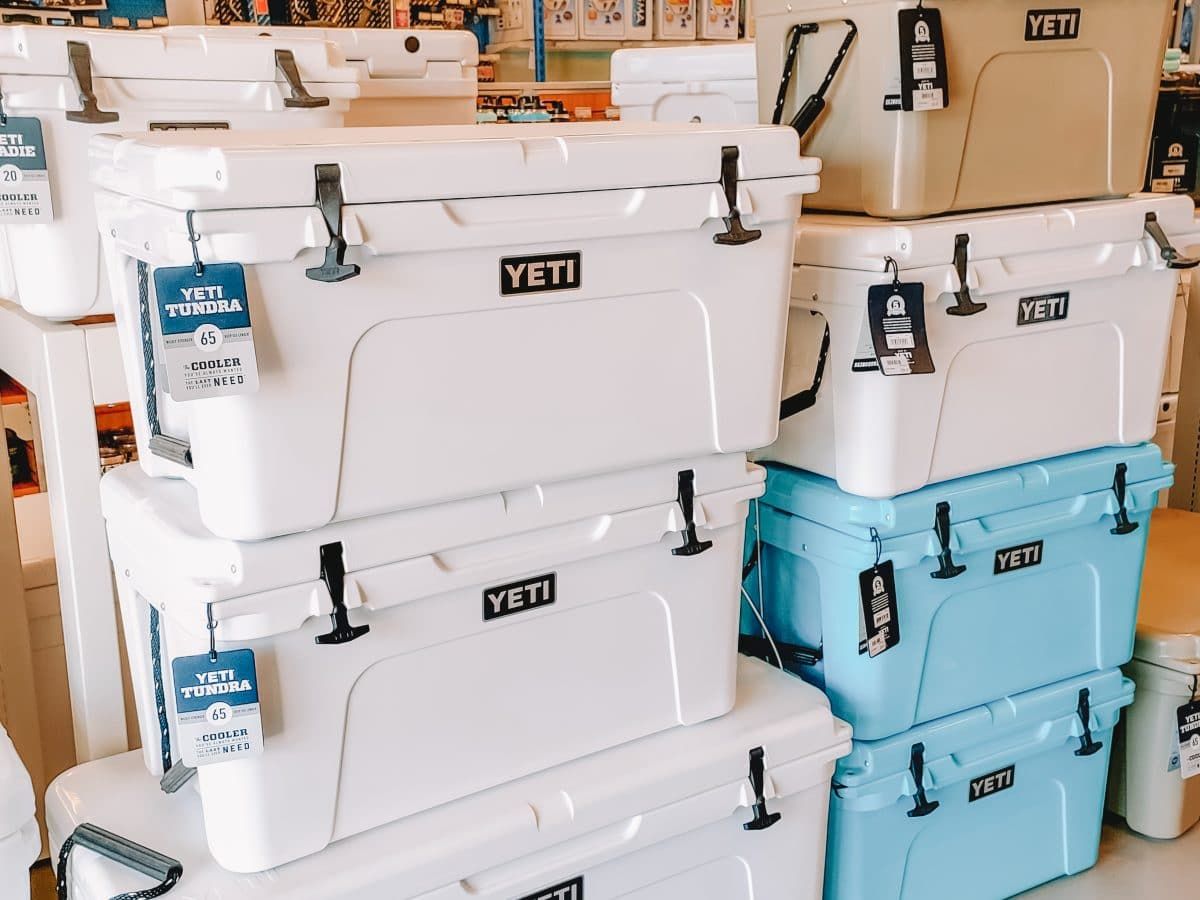
Expensive
The number one issue with Yeti coolers is their price. As with many high-quality products, Yeti coolers do not come cheap. In fact, they will run you hundreds of dollars.
While they’re durable and highly insulated, this price tag might be plain out of reach for some.
With brands like Yeti that have a reputation that precedes them, it sometimes feels like you’re paying for the brand name.
However, there are other alternatives on the market with similar designs that are made from quality materials as well.
Limited storage space for the size
There’s a downside to Yeti’s thick walls: they have limited interior space for storing food and beverages compared to how large the outer dimensions of the cooler are.
This can be a bit of a drag when you’re traveling. A Yeti cooler will take up a significant amount of real estate in your car, but it won’t hold as much as you might hope.
Heavy
Another pitfall of Yeti’s stocky walls is that they make for a large cooler.
The 48-liter wheeled Yeti Tundra is a hefty 37 pounds, without bags of ice and bottles of beer inside it. That’s a lot to lug around when you’re on the go.
Ice melts if you open the cooler often
You can’t outrun the laws of nature. Although a Yeti cooler will retain ice for several days if you leave it alone, it will inevitably melt if you’re opening it often to grab beverages or ingredients.
This is true of any camping cooler, but it raises the question of why should you pay an arm and a leg for a cooler when the ice will melt anyway with frequent use?
Ultimately, the main qualm I have with Yeti coolers is their price. Why pay more when there are comparable products available at lower price points?
Looking for a tent to go with your camping cooler? Check out our guides to the best 4-person tents, 6-person tents, 8-person tents, 10-person tents, 12-person tents, large camping tents, 3-room tents, instant tents, pop-up tents, inflatable tents, canvas tents, waterproof tents, insulated tents, winter tents, tents with stove jacks, tunnel tents, and cabin tents.
Best Alternatives to Yeti Coolers
#1 BISON Medium Rotomolded Cooler

Star rating: 4.9/5
Capacity: 53 quarts
Best for: People who love Yeti but want to widen their options.
As I mentioned above, roto-molding is a process where they cast the entire cooler in a mold and rotate it while it cools to create a super-strong and seamless piece.
It results in a cooler that’s super sturdy and offers better ice retention than coolers that have seams.
Yeti coolers are excellent at keeping things cold thanks to their rotomolded hard shell, but there are other rotomolded ice chests to choose from. The Bison Cooler is one of them.
Bison coolers are pretty comparable to Yeti coolers. Aside from being rotomolded, they also have thickly-insulated walls that extend ice life. And they have similar heavy-duty latches to prevent animals from breaking in.
Additionally, Bison is an all-American-made Yeti alternative, and they strive to not outsource any of their manufacturing overseas.
Bison coolers are about equal to Yetis in terms of price. So, you might be wondering: why buy a Bison if they’re offering the same things as Yeti at a similar price point?
For one thing, all rotomolded coolers will be somewhat pricey because it’s an expensive process. While some cost slightly less, all rotomolded coolers will run you several hundred dollars.
So, if you want the advantages of a rotomolded cooler, you should be prepared to spend some money.
The main reason why you might want a Bison cooler is that it offers a few variables that are different from Yeti.
While the Yeti Tundra is available in 25 quarts, 45 quarts, 65 quarts, 75 quarts, and up from there, the Bison has a 50-quart option.
So, if 45 quarts is just a hair too small and you don’t want to spring for 65 quarts, a Bison cooler might be your better option.
The Bison also has six different color options, while the Yeti Tundra is generally only available in three colors.
So, if you love the Yeti coolers but feel limited by their options, Bison coolers are a great alternative.
PROS
- Rotomolded
- Made in the USA
- Excellent insulation
CONS
- Expensive
- It doesn’t have a lot of defining features to set it apart from Yeti
#2 Siberian Coolers Alpha Pro Series

Star rating: 4.8/5
Capacity: 45 quarts
Best for: Camping in bear country.
The Siberian Coolers Alpha Pro Series is highly comparable to the Yeti Tundra. It’s rotomolded, extremely insulated, and includes some very similar features.
Most notably, the Yeti Tundra and the Siberian Alpha Pro both come with a wire basket to organize the coolers’ contents.
The Siberian Alpha Cooler is slightly more expensive than the Tundra of the same size. So, again, what sets this cooler apart and makes it a better alternative Yeti cooler?
The Siberian Cooler has a few extra features that the Yeti models don’t have. In addition to the wire basket, it also comes with a cutting board and a cup holder.
Similar to Yeti coolers, the Siberian cooler is also certified to be bear-resistant.
In addition to a hard plastic outer shell, they utilize military-grade hard-anodized aluminum in the design, resulting in a super-durable cooler.
PROS
- Rotomolded
- bear-resistant
- It comes with a cutting board and cupholder
CONS
- Expensive
- Relatively similar to Yeti
#3 Canyon Cooler

Star rating: 4.8/5
Capacity: 35 quarts
Best for: Campers who want an excellent product at a slightly lower cost.
At first glance, you might think that the Canyon Cooler is, like the Siberian and the Bison, relatively comparable to the Yeti.
And while it does share many of the Yeti Tundra’s favorable characteristics, a few things set the Canyon Cooler apart.
The Canyon is a slightly cheaper cooler that’s still very high-quality.
The Canyon Cooler is rotomolded, so a 35-quart model won’t necessarily be cheap. However, you’ll save about 10% of the cost on the Canyon compared to the Yeti Tundra of the same size.
Another advantage of Canyon coolers is that they offer a lot of interior space. They boast that they have the best volume to insulation ratio of any cooler on the market.
While it’s easy to be dubious of claims like this, the Canyon Cooler has a unique straight-wall design, which allows for more space on the inside.
Comparatively, the Yeti tapers slightly toward the bottom, so it takes up more space than is usable.
Another one of the Canyon’s perks is its EZ Cam latches, which easily slip into a sturdy, locked position. Yeti uses rubber latches, which can be hard to pull up and down.
Aside from that, Canyon coolers offer the same excellent perks as Yetis. They’re extremely tough and durable and they can keep ice frozen for multiple days.
They’re also certified bear-resistant by the International Grizzly Bear Committee, and they have excellent ice retention if you pre-chill them for a day ahead of using them.
PROS
- Less expensive than a Yeti cooler
- Excellent ice retention
- Spacious interior thanks to a straight-wall design
CONS
- Still somewhat pricey
- Heavier than a Yeti
#4 Igloo ECOCOOL Cooler
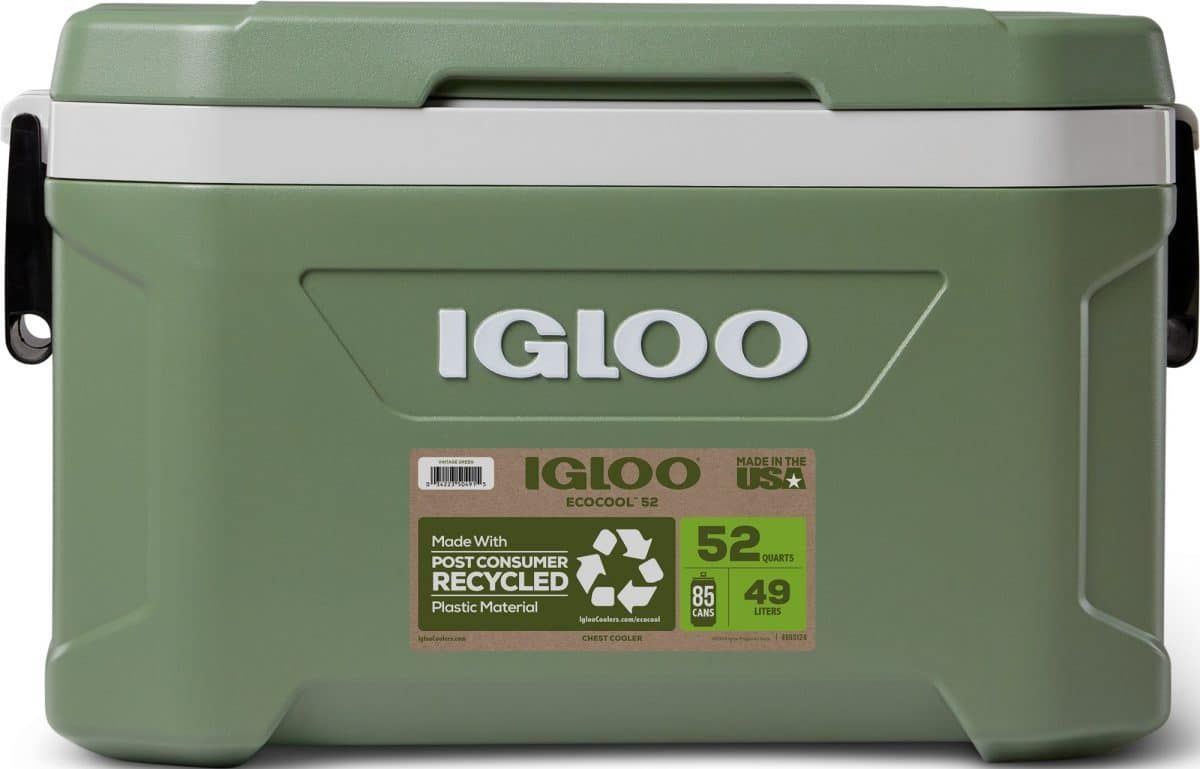
Star rating: 4.7/5
Capacity: 51 quarts
Best for: Campers who want a cooler that’s eco-friendly AND budget-friendly.
Camping is an extremely budget-friendly way to travel, but the gear can add up to a lot when looking for top-quality products.
If you only go camping occasionally or for short weekend trips, spending hundreds of dollars on a cooler might not make sense for your budget.
Luckily, there’s the Igloo EcoCool Cooler, which is a fraction of the price of a Yeti, but still offers excellent quality.
Igloo coolers are a classic, old-school cooler brand. They don’t offer rotomolded coolers, so they have a lower price point. However, that doesn’t mean that the quality isn’t there.
Igloo uses “Post-Consumer Resin” for the outer shell, meaning the materials are recycled. So, their coolers have the added plus of lowering your environmental impact.
Inside that hard outer shell, a unique foam called “Thermecool” provides enough insulation to keep the contents cold for up to three days.
Another aspect of this ice chest that helps to keep things frozen is that the design features small risers that lift the cooler off the ground.
The risers provide a slight separation between the chest floor and hot surfaces while adding airflow.
One downside is that the Igloo Ecocool doesn’t have a drain plug for pouring off melted ice, meaning you’ll have to tip the whole cooler over to get excess water out.
But if you’re looking for more affordable coolers, Igloo coolers are a solid choice, and the Ecocool model makes for an excellent Yeti alternative.
PROS
- Inexpensive
- Recycled materials
- Keeps contents cool for three days
CONS
- Not rotomolded
- No drain plug
#5 Coleman Xtreme 5 Cooler

Star rating: 4.7/5
Capacity: 70 quarts
Best for: Serious campers on a budget.
When I think of camping gear, Coleman is one of the first brands that comes to mind. I grew up with Coleman: Coleman tents, Coleman camping stoves, and Coleman lanterns.
Coleman is a dependable brand that offers products at reasonable prices, so it’s no wonder that one of the best Yeti cooler alternatives is a Coleman cooler.
The Coleman Xtreme 5 Cooler is a cut above their standard model, making it a good Yeti dupe.
It’s not rotomolded, so they’re able to offer it at a much lower price than a Yeti cooler.
But thanks to an insulated lid and extra insulation around the walls, this cooler can retain ice for up to five days, even when temperatures reach 90 degrees!
This cooler is tailor-made for good times. Its 70-quart capacity means it can fit up to 100 cans. There are also four cup holders in the lid, which doubles as a seat with a weight capacity of 250 pounds.
Because let’s face it, there’s always someone who will sit on the cooler while you’re camping. It’s best if the manufacturer embraces that and makes sure the lid can hold the weight of an average person.
While the Coleman Xtreme has a snugly-fitting lid, it doesn’t have latches, so it’s not bear-proof.
It also doesn’t have a place to put a lock, so there’s no way to adapt it to be bear-resistant, which just means that you’ll need to lock the cooler up in your car when it’s unattended.
PROS
- Large capacity
- Built-in cupholders
- Keeps ice solid for five days
CONS
- Not bear-proof
- Heavy
#6 RTIC Ultra-Light

Star rating: 4.8/5
Capacity: 52 quart
Best for: Yeti lovers looking for a lower price point.
When you’re looking for a cheaper Yeti alternative, one name that continually pops up is RTIC. And looking at everything that the RTIC Ultra-Light has to offer, that makes a lot of sense.
RTIC has essentially done the impossible with the Ultra Light Cooler: created an alternative to rotomolded ice chests at a significantly lower price and lighter weight than other similar coolers on the market.
So, how did they do it? With injection molding.
Injection molding is more or less what it sounds like: a process of injecting liquid plastic into a mold, resulting in a seamless and robust product.
The mold doesn’t rotate as the plastic cools, so the distribution of the plastic isn’t quite as even as with rotomolding, nor is it as heavy-duty.
However, you still get many of the same advantages of rotomolding at a lower price and a lighter weight.
To give you an idea, the RTIC Ultra-light weighs 30% less than its rotomolded counterparts.
That’s a tremendous advantage because all hard coolers can get heavy once they’re full of ice, food, and beverages, which is especially true for rotomolded coolers like Yeti.
When you look at RTIC vs Yeti, the RTIC cooler essentially offers all of the same perks. It, too, can hold ice for up to 10 days.
Like the Yeti Tundra, the RTIC Ultralight also comes with a removable wire basket to help keep its contents organized.
And it has non-slip feet, a locking system to deter bears and other hungry critters, and thickly insulated walls.
The RTIC also comes in a lot of fun colors. For this 52-quart model, there are seven different color options, including some bright color combos such as green-yellow-purple and olive-orange-brown.
PROS
- Injection-molded
- Holds ice for ten days
- Less expensive than Yeti
CONS
- Not quite as durable as rotomolded coolers
- No extra features like wheels or a bottle opener
#7 Orca Cooler

Star rating: 4.6/5
Capacity: 40 quarts
Best for: First responders who love to get away to the great outdoors.
The Orca Cooler brand makes products that are very similar to Yeti coolers. This 40-quart version is rotomolded with thick walls that can offer up to ten days of ice retention.
Design wise, there are a lot of similarities between Orca coolers and Yeti coolers.
Orca coolers have a drainage spout, an interlocking lid, and rubber pull-down latches (although Orca shapes their latches like little whale tails for a cute visual touch).
A unique feature of Orca coolers is a cargo net that attaches to the outside where you can store extra gear.
This storage net is helpful because coolers tend to take up a lot of real estate in a car, especially those with additional insulation.
This way, your cooler does double duty by ensuring that essentials such as sunscreen and bug spray come with it on your adventure.
Pricewise, Orca coolers are equal to Yeti, although they offer slightly different sizes. With the Yeti Tundra, there’s a 35-quart model and a 45-quart model, while this Orca cooler falls right in between at 40 quarts.
Orca coolers are also certified bear-resistant, have a lifetime warranty, and they’re made in the USA.
They also support the Wounded Warrier project and offer discounts to the military, first responders, and nurses.
So, while their products are just as pricey as Yeti, they may not be if you fall into one of those categories.
PROS
- Rotomolded for impressive ice retention
- Discounts for first responders, nurses, and military
- Storage net
CONS
- Pricey
- Heavy
#8 ENGEL Cooler/Dry Box

Star rating: 4.8/5
Capacity: 19 quarts
Best for: Day trips and fishing trips.
If you’re in the market for Yeti competitor coolers that offer a serious price break, then an Engel Cooler/Dry Box may be what you’re looking for.
Engel coolers are injection-molded to offer a quality product at less than half the price of a Yeti.
And while aesthetics certainly aren’t at the top of the list of requirements for functional outdoor gear, Engel coolers are incredibly stylish.
Their curved lines, metal claps, and fun color options (such as coral and baby blue) give them a decidedly retro feel. Engel also focuses on smaller coolers – they make one as small as 7.5 quarts.
One cool thing about this 19-quart cooler is that it doubles as a dry box, so it’s excellent for fishing and boating trips. You could pack your lunch and your camera in this cooler.
Unfortunately, Engel coolers don’t have the best ice retention, so they’re not the best choice for long camping trips.
However, they’re great for shorter excursions and day trips when you don’t need an expensive cooler.
Another positive thing about Engel coolers is that they’re stain and odor resistant – yet another reason why they’ll serve you well on a fishing trip!
PROS
- Inexpensive
- Fun color options
- Stain and odor resistant
CONS
- It doesn’t hold ice as long as a Yeti
- A bit heavy for a small, injection-molded cooler
#9 IceMule Pro Cooler – 23 Liters

Star rating: 4.7/5
Capacity: 16 quarts
Best for: Transporting cold beverages while hiking and backpacking.
Yeti soft coolers are just as pricey as their hard-sided counterparts. Luckily, the IceMule Pro Cooler – 23 Liters is an excellent Yeti soft cooler alternative.
And it’s way more affordable than its YETI Hopper Flip 18 Soft Cooler look-a-like.
The IceMule is a 24-quart, backpack-style soft cooler. The outside is ultra-durable, made of 1,000-denier ripstop tarpaulin.
And the polar insulation is twice as thick as your average Walmart soft-sided cooler.
But most importantly, it keeps 18 cans with ice cool for up to 24 hours.
While that’s a lot less than the ten-day guarantee of a rotomolded cooler, soft-sided coolers are generally for day trips and hikes, so you’re not likely to need more.
Additionally, the IceMule features an air valve that has a dual purpose.
First, it allows you to add more air to up its insulating abilities and make it buoyant if it falls into a body of water. The air valve can also work to let the air out and compress the cooler.
And a comfortable double-padded shoulder strap makes this an easy companion on a hike or day trip, ensuring that you’ll have an ice-cold beverage at the end of it.
The IceMule Jaunt Coole is way cheaper but still an excellent Yeti cooler alternative.
PROS
- Backpack
- Air valve to inflate and improve insulation or deflate for storage
- Less expensive than the Yeti Hopper
CONS
- Only backpack straps
Check Price on
#10 Grizzly 20 Cooler

Star rating: 4.7/5
Capacity: 20 quarts
Best for: Eco-friendly campers on short weekend trips.
The Tundra isn’t Yet’s only hard-sided cooler. They also make the Yeti Roadie, a smaller cooler designed for shorter trips or keeping in a car.
The Grizzly 20 Cooler is a comparable dupe for the Yeti Roadie.
The Grizzly cooler is rotomolded, with excellent ice retention and durability. It’s also relatively pricey but still costs a bit less than the Yeti Roadie.
Many of us who love camping and outdoor activities are also environmentally conscious. After all, we understand the beauty and importance of the natural world.
Most coolers use polystyrene for their insulation, which isn’t a very environmentally-friendly material.
Grizzly coolers use Ecomate polyurethane foam, which doesn’t contribute to global warming, harm the ozone, or utilize any VOCs in their manufacturing process.
Like Yeti, Grizzly coolers are also certified bear-resistant by the Interagency Grizzly Bear Committee. With a name like Grizzly, I would hope for as much!
And they have a similar design to standard Yeti coolers, with a comparably heavy-duty locking system and an integrated hinge. They’re also made in the USA.
One advantage of the Yeti Roadie over the Grizzly Cooler is the Roadie’s interior height of 13″, perfect for accommodating most wine bottles.
This Grizzly Cooler’s internal height is only 10.25″, so you won’t be able to fit an upright wine bottle in it.
One other downside to Grizzly coolers is that their handles don’t lock in place, which can be cumbersome.
But when it comes to aesthetic choices, Grizzly coolers win out. The Roadie offers five color options while Grizzly coolers offer nine.
Remember, color choices aren’t only about aesthetics, bright colors can be functional as well. If you opt for neon lime or orange, you won’t have any trouble finding it at night when reaching for another cold one!
PROS
- Rotomolded
- Less expensive than Yeti
- Eco-friendly insulation materials
CONS
- Not tall enough to accommodate a wine bottle
- The handle doesn’t lock in place
#11 Pelican Elite Coolers with Wheels

Star rating: 4.3/5
Capacity: 45 or 80 quarts
Best for: Longer camping trips with big groups.
Hard-sided ice chests can get very heavy, so wheels are a great way to make a heavy cooler easy to transport.
The Yeti Tundra Haul Hard Cooler has two solid tires and a trolley handle that allows you to tip it and easily roll it behind you.
If you hate lugging around heavy gear, you may be looking for coolers comparable to Yeti with wheels.
If that sounds like you, then look at the Pelican Elite Cooler with Wheels, one of the top Yeti alternative coolers.
Pelican is a company that initially made a name for itself with highly rugged equipment boxes.
They’ve branched out into a whole host of other products, including phone cases that rival Otterbox cases. It only makes sense that their list of products would also include coolers.
Like all Pelican products, Pelican coolers are rugged, offering many of the same advantages as a Yeti cooler.
The Elite Cooler’s rotomolded exterior promises 10 days of ice retention and it’s certified bear-resistant.
It also has a sloped drainage hole, a freezer-grade lid gasket (the rubber strip that goes around the open to seal in cold air), and press-and-pull latches.
And this wheeled cooler has something that the Yeti Haul Hard Cooler doesn’t: a built-in bottle opener, which is a nice perk considering how essential bottle openers can be and how easy they are to forget to pack.
Unfortunately, Pelican coolers aren’t any cheaper than Yetis. The 45-quart Pelican Cooler is the same price as the Yeti Haul Hard Cooler, which can hold up to 55 quarts. So, when comparing the size to price, Pelican is a bit pricier than Yeti.
But that 55-quart model is Yeti’s only wheeled cooler, whereas the Pelican Elite is also available in a massive 80-quart size. And more volume means more ice, food, beverages, and longer camping excursions.
Another downside to look out for with the Pelican cooler is that several reviewers received it with missing parts, so you’ll want to double-check that you received everything once it arrives.
With that said, a fully functional Pelican is a great cooler that can rival Yeti any day!
PROS
- It comes in an 80-quart size
- Rotomolded with excellent ice retention
- Built-in bottle opener
CONS
- More expensive than Yeti
- Some consumers have received coolers with missing parts
#12 Lifetime 65 Quart High-Performance Hard Cooler

Star rating: 4.8/5
Capacity: 65 quarts
Best for: Campers looking for a discounted Yeti cooler alternative.
If you love Yetis and value rotomolding, but can’t bring yourself to shell out all that cash, you’re probably searching for cheaper Yeti alternatives.
The Lifetime 65 Quart High-Performance Hard Cooler isn’t rotomolded, but it will keep ice cold for up to eight days.
Considering how expensive rotomolded coolers are, this amazing cooler might be your holy grail.
Lifetime combines a polyethylene exterior with polyurethane insulation and a deep freeze seal to provide the same long-term ice retention as Yeti and other expensive cooler brands.
It comes complete with a sturdy drainage spout compatible with garden hoses. It doesn’t have a built-in cupholder, but it does have easy-to-open rubber latches and corner locks to keep bears out.
What I really love about this cooler is that it’s rated bear-resistant for up to an hour. You will need to buy your own padlocks though.
I’ve had some very memorable run-ins with raccoons while camping, so this is good even if you’re not in bear country.
PROS
- Cheaper than Yeti
- Bear-resistant for up to an hour
- Includes leak-proof drain compatible with garden hoses
CONS
- No rotomolding
Conclusion: Which is the Best Yeti Alternative?

While many of the brands on this list make great coolers like Yeti, one cooler brand stands out as the best alternative to the Yeti cooler, and that’s RTIC.
What makes the RTIC Ultra-Light the best knockoff Yeti cooler? The secret is injection molding.
Sure, it’s not roto molding, but it’s still a notably better cooler construction technique than the traditional seamed plastic of most cooler brands.
This process allows for the most significant price break while still offering the most important advantages of a Yeti cooler.
And the benefits are stark when you compare the RTIC Ultra-Light to the closest Yeti equivalent.
The most similar Yeti cooler is the Tundra 45, holding 45 quarts. The RTIC Ultra-Light Cooler holds 52 quarts, which means it can carry more beverages and more ice, and it’s about 30% cheaper.
This RTIC cooler also comes with a list of unique features that rival the Yeti models.
Most importantly, it offers 10 full days of ice retention and is bear-resistant. It also has an integrated locking system, rubber latches, a vortex draining system, and the list goes on and on.
On top of all that, RTIC offers something that Yeti doesn’t, a range of exciting and unique colors. Aesthetics, of course, isn’t what makes a cooler great, but it’s undoubtedly a fun perk!
Ultimately, there are a bunch of cooler manufacturers that make great coolers like Yeti at every price point to fit every budget and need.
The world of coolers is vast and filled with excellent Yeti cooler alternatives, hopefully, this article helped you choose the best one for your needs.
ABOUT THE AUTHOR

Elina Ansary
Elina Ansary is a writer, visual artist, and avid traveler. She grew up in San Francisco, CA, and spent her childhood camping up and down Northern California. These days, Elina visits artist residencies in locations around the world, including Amsterdam, Finland, Italy, and Australia, and has exhibited her work in galleries and museums in the US and abroad. When she isn’t writing and editing for The Atlas Heart, Elina is pursuing a Master’s degree in Visual Art at Cornell University and splits her time between Ithaca and Brooklyn.
Looking for more outdoor gear recommendations? Read our related articles below!
Best Screen Houses for Camping
Best Hammocks with a Mosquito Net
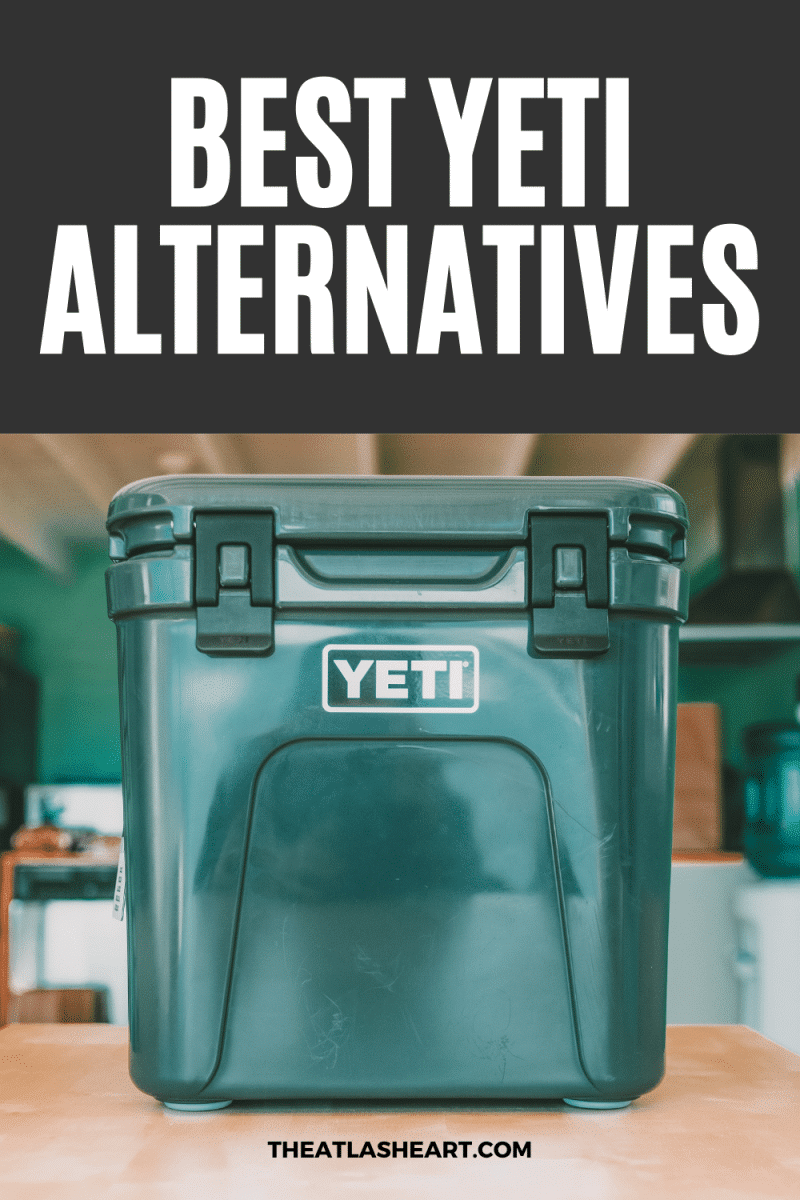
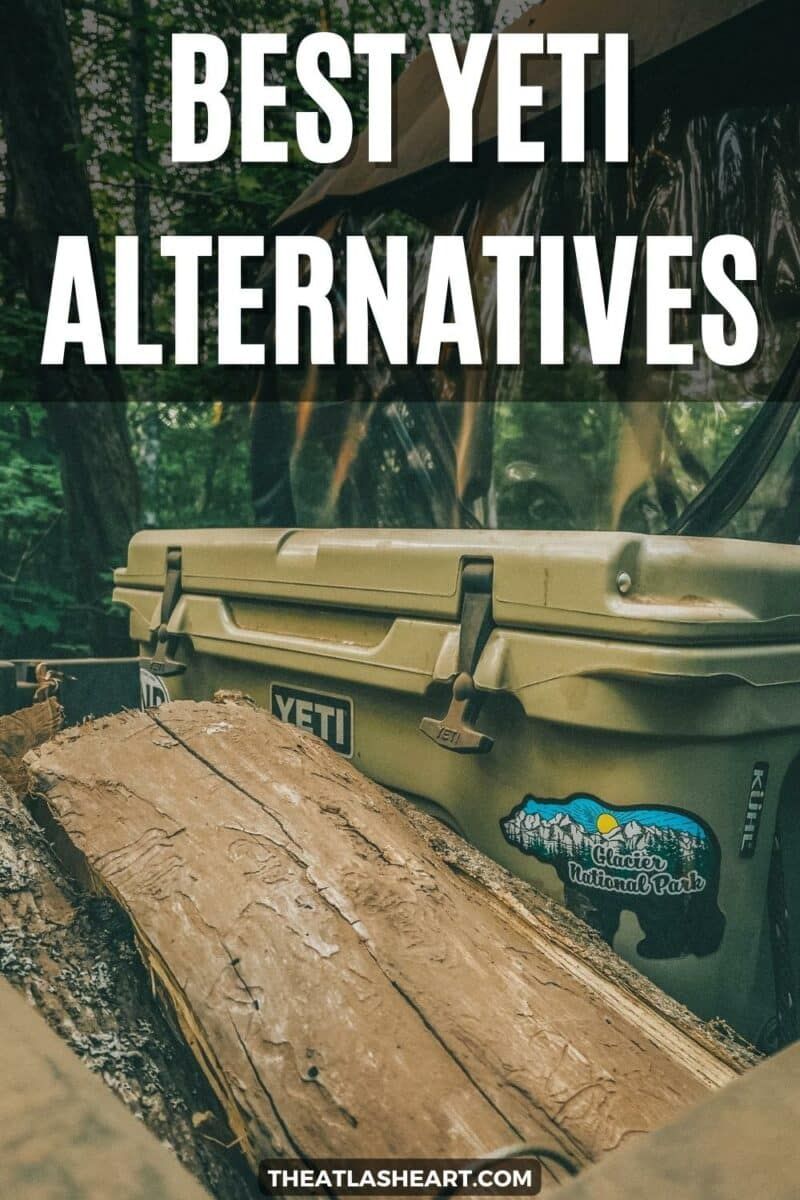
Pin one of these images for future reference


